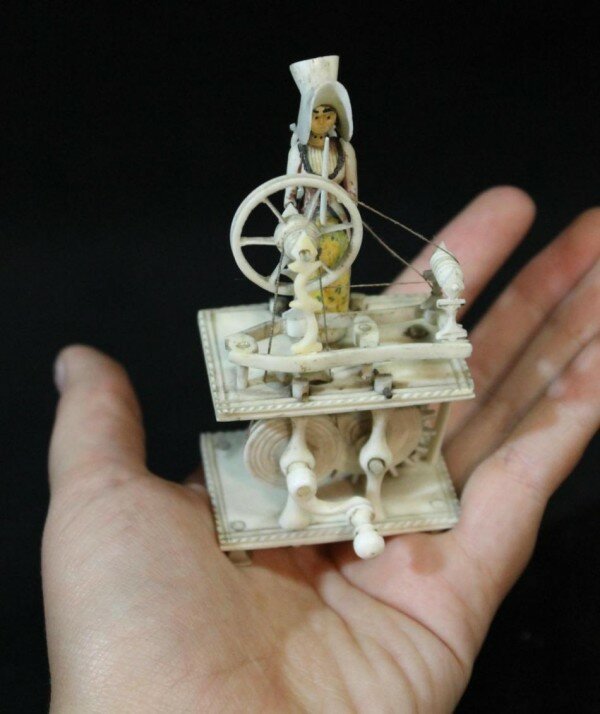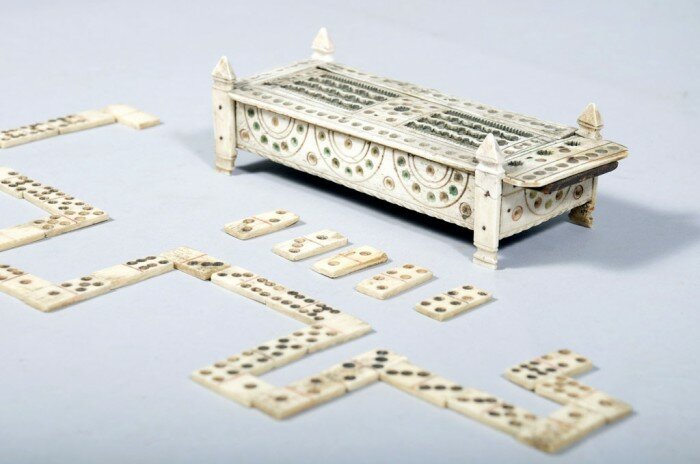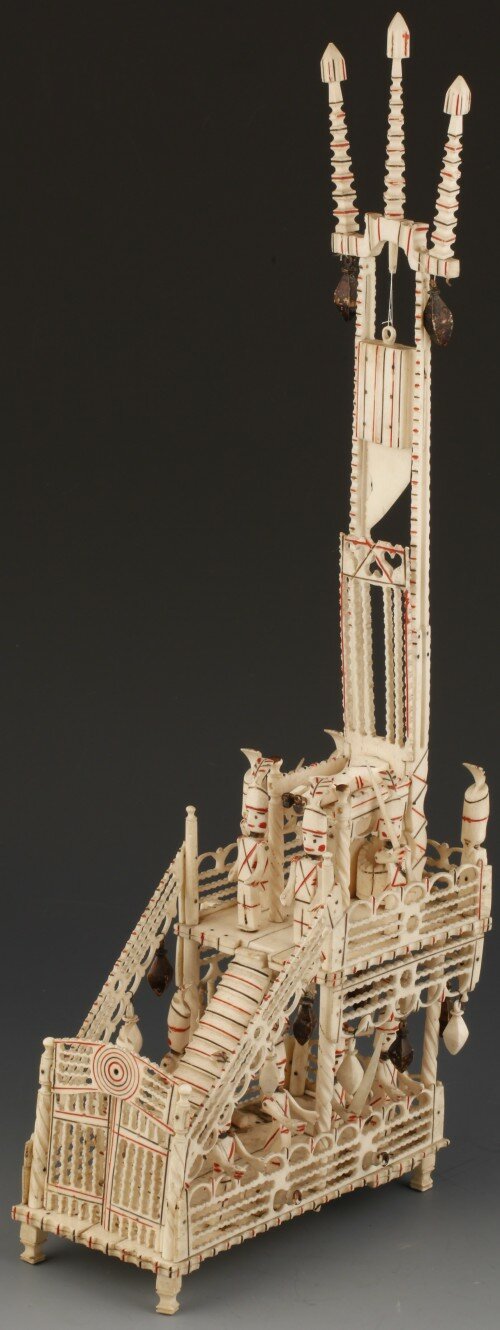A few months ago I saw this piece featured in Skinner’s American Furniture & Decorative Arts auction and was immediately intrigued. What was it? It reminded me of one of those old coin banks where you insert a quarter into a dog’s mouth and an unintentionally demonic clown waves the four legged performer through a hula hoop thereby depositing funds into your account.
However, this is not a bank at all. It is actually a prisoner of war piece made entirely out of bone.
….
MADE.ENTIRELY.OUT.OF.BONE.
——————————
(detail)
“Lot 413 – Napoleonic Prisoner-of-War Bone and Straw-work Spinning Jenny, Britain, late 18th/early 19th century, the mechanized model with eight figures and two dogs, with polychrome painted details, the upper and lower wood platforms with applied geometric straw-work designs.
This prisoner-of-war artifact was made in the late 18th/early 19th century by a French prisoner incarcerated by the British under dismal conditions, using primitive tools.“
Fascinated by the spinning jenny, I decided to employ some expert Googling to find out if Bone Art was “a thing”.
Indeed.
To pass time while incarcerated, many French Prisoners of War would keep pig and mutton bones from food rations issued to them by the English, boil them and bleach them in the sun. And when prisoners couldn’t scrounge up enough materials from meals to complete their intricate creations, they would supplement these supplies with human bones found in shallow graves around camp.
I guess you can only play M.A.S.H. with your cell mates for so long before you entertain turning skeletal remains into sculptures.
Some Other Examples of Bone Art:
(Antique French Folk Art Prisoner of War Miniature Bone Spinning Wheel Automaton)
(scrimshaw type bone folding toothpick)
(German WWI PoW Scrimshaw vase)
(Pair of Libby Prison Bone PoW art candlesticks)
(carved domino set made by a French Napoleonic Prisoner of War)
And my personal favorite..
The mechanized bone guillotine.
Unreal.
During the 19th century, naval ships(although quite rare now)were one of the most popular subjects depicted by PoWs. They even gained recognition and acclaim outside of the camps as townspeople began requesting commissioned works from the prisoners.
“The imprisoned artists used the largest bones to carve the body of the ship, moving on to the smaller ones and pieces of wood to create the finely detailed cannons and masts. Apart from human, mutton and cattle bones, the Frenchmen also used tissue paper to create the sails and their own hair for the sail rigging. At one point, there was such a market for the bone ships that people in nearby villages would smuggle turtle shells, silk, metal foil and other materials for the artists to use. Although most of the POWs’ bone ships weren’t built to scale, the level of craftsmanship makes this fault easy to overlook. Some of the more advanced creations also contain fine mechanisms that allow the sails to be raised and retract the canons inside the ship.”
Learn more about bone art here.
Check out a related post about trench art here.

This post may have been more appropriate around Halloween, but with the holidays coming up, I figured a scrimshaw torture device might just make the perfect stocking stuffer.
Cufflinks are so passé. ♥














